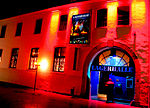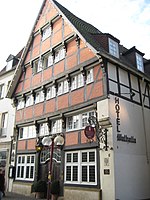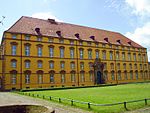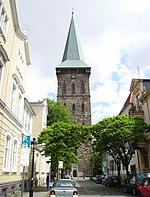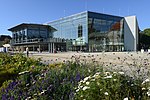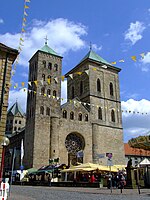Waterloo-Tor
Buildings and structures in OsnabrückMonuments and memorials in GermanyTourist attractions in Osnabrück

Waterloo-Tor (English: Waterloo Gate) is a war memorial in Osnabrück, Germany, commemorating the Battle of Waterloo. Along with its surrounding area the Waterloo-Tor is usually referred to as “Heger Tor” by residents of Osnabrück; the name “Waterloo-Tor” is barely used by locals.
Excerpt from the Wikipedia article Waterloo-Tor (License: CC BY-SA 3.0, Authors, Images).Waterloo-Tor
Bocksmauer, Osnabrück Innenstadt
Geographical coordinates (GPS) Address Nearby Places Show on map
Geographical coordinates (GPS)
| Latitude | Longitude |
|---|---|
| N 52.2763 ° | E 8.0388 ° |
Address
Heger Tor
Bocksmauer
49074 Osnabrück, Innenstadt
Lower Saxony, Germany
Open on Google Maps
